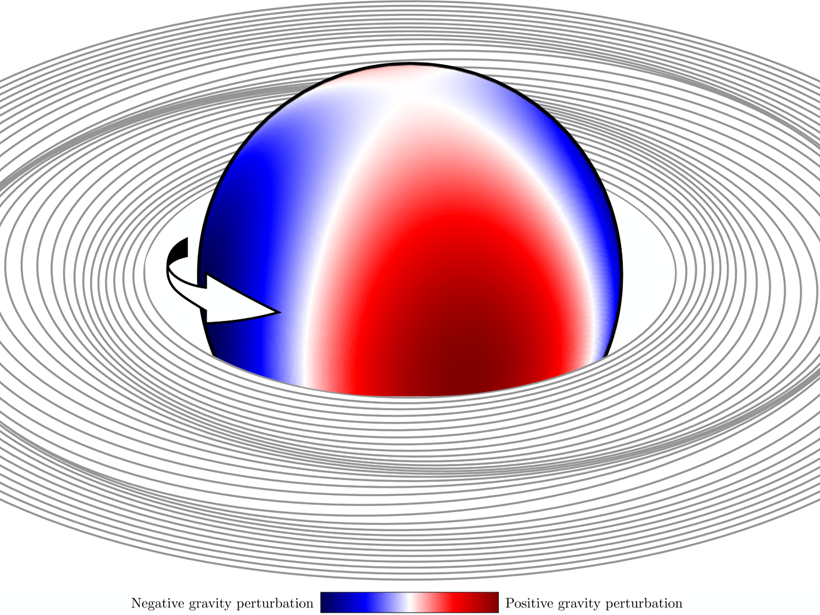Source: AGU Advances
Seismology is a powerful tool for probing a planet or star’s interior structure. Almost forty years ago, it was recognized that internal oscillations in Saturn could produce wave patterns in its rings: the rings could act as a seismometer. Now, as Mankovich [2020] describes in a Commentary, twenty such patterns are known, and lead to two surprising conclusions.
The first is that the interior half of Saturn is not convecting, as was expected, but is stably stratified. The explanation is most likely a deep but diffuse rock-rich region. The second conclusion is that Saturn is not only rotating somewhat faster than was previously thought, but that the rotation rate varies with depth. The use of rings as seismometers is still in its infancy, and more is likely to be learned as modeling techniques become more precise. Furthermore, this work opens up the possibility of using similar approaches elsewhere, notably the ring system of Uranus.
Citation: Mankovich, C. [2020]. Saturn’s rings as a seismograph to probe Saturn’s internal structures. AGU Advances, 1, e2019AV000142. https://doi.org/10.1029/2019AV000142
—Francis Nimmo, Editor, AGU Advances
Text © 2020. The authors. CC BY-NC-ND 3.0
Except where otherwise noted, images are subject to copyright. Any reuse without express permission from the copyright owner is prohibited.

